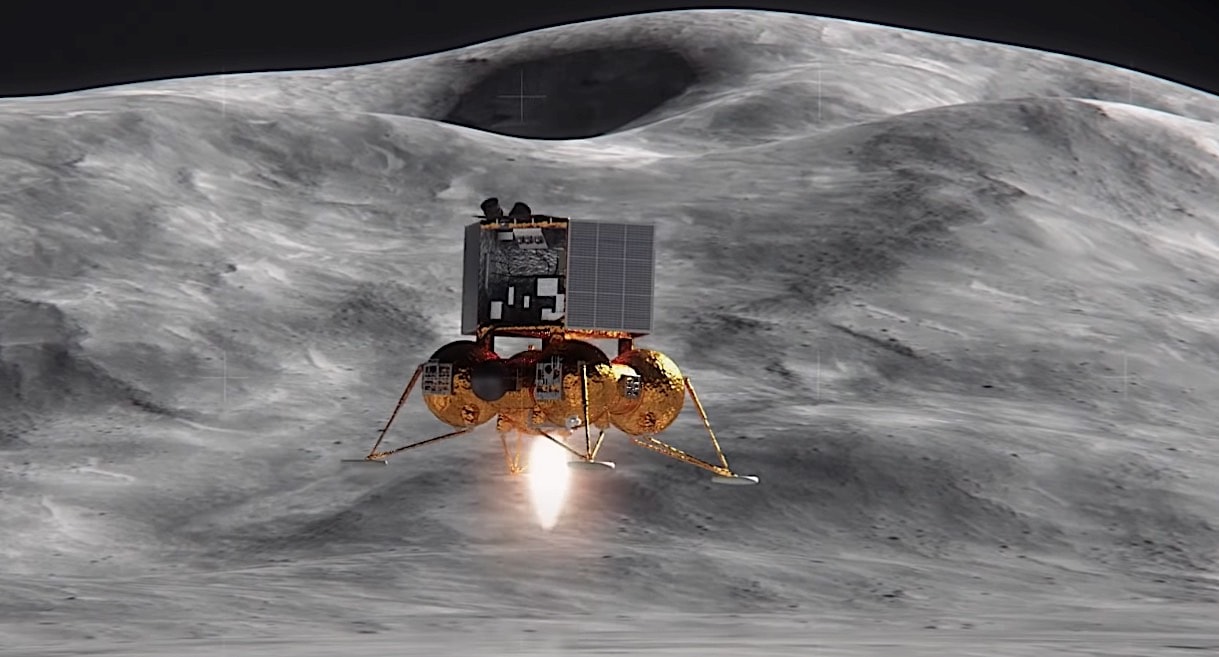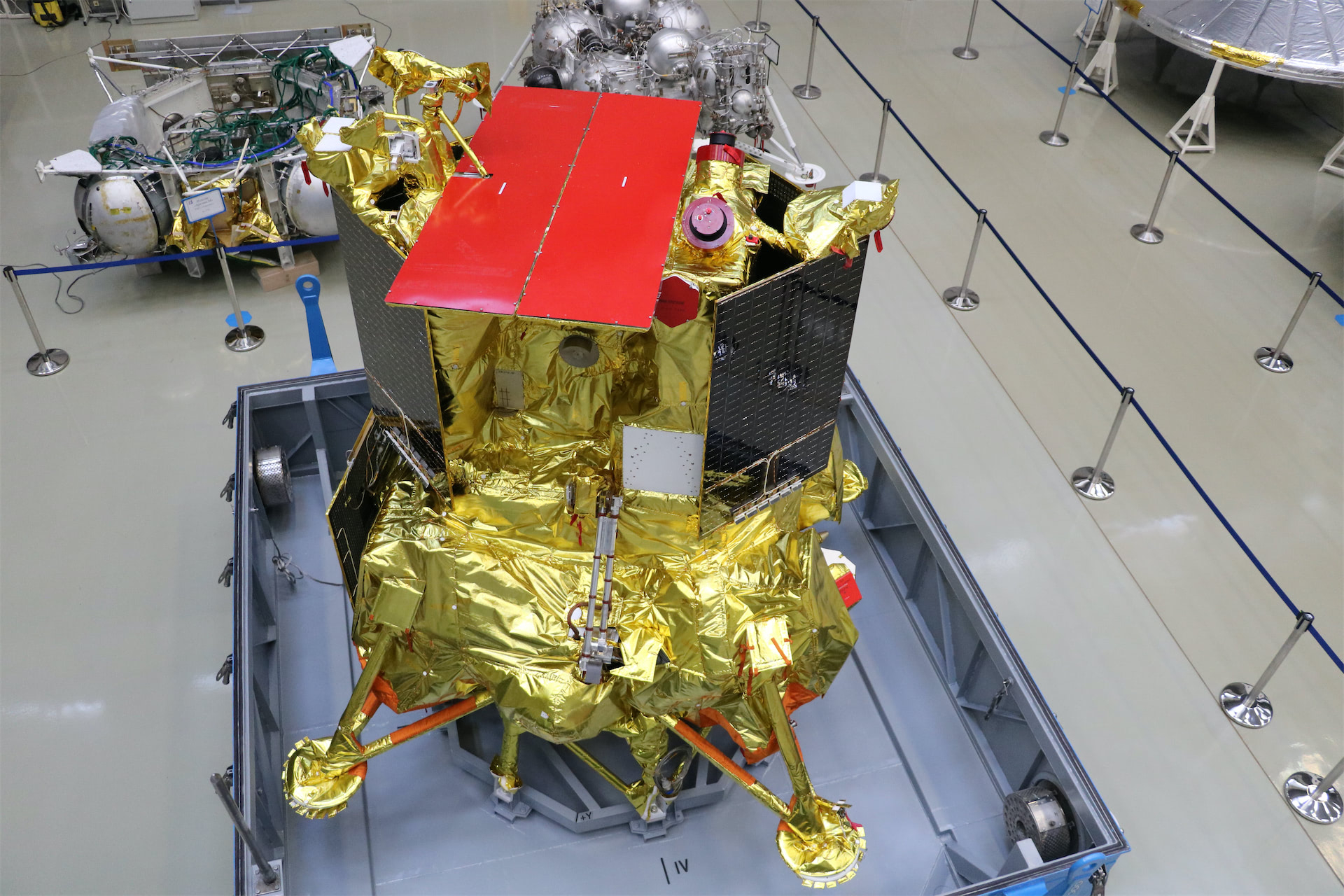ISRO Extends Congratulations as Russia’s Luna-25 Mission Embarks on Lunar Journey

ISRO Extends Congratulations as Russia’s Luna-25 Mission Embarks on Lunar Journey
The Indian Space Research Organisation (ISRO) conveyed its warm congratulations to Roscosmos, the Russian Federation’s state corporation overseeing spaceflights, following the successful launch of Luna-25. This Lunar mission holds immense significance as it marks Roscosmos’ return to lunar exploration after a hiatus of nearly five decades. The accomplishment is not only a noteworthy achievement for Roscosmos but also a testament to international cooperation and advancements in space exploration.
ISRO’s acknowledgment of Roscosmos’ achievement underscores the collaborative spirit within the global space community. Luna-25’s successful launch signifies a pivotal moment for Roscosmos, as it embarks on a new lunar mission that contributes to humanity’s broader understanding of the Moon’s mysteries and potential scientific insights. This cross-border recognition exemplifies the shared dedication of space agencies worldwide to push the boundaries of space exploration for the betterment of science and exploration.
“Congratulations, Roscosmos, on the remarkable launch of Luna-25! 🎉 It’s truly inspiring to witness yet another milestone in our shared space endeavors. Best wishes for the successful accomplishments of both Chandrayaan-3 and Luna-25 missions,” expressed the space agency through its platform on X (previously known as Twitter).
In a significant event, a rocket carrying a lunar landing craft soared into the skies on Friday, marking Russia’s return to lunar exploration after nearly five decades. This mission has taken off with the goal of touching down on Earth’s celestial neighbor, the Moon, ahead of the Indian spacecraft, Chandrayaan-3. The race to reach the lunar surface underscores the renewed enthusiasm and efforts of different space agencies in unraveling the mysteries and possibilities that lie on the Moon’s terrain.

Lifting off from the remote Vostochny cosmodrome located 3,450 miles (5,550 km) east of Moscow, a Soyuz 2.1v rocket embarked on a momentous journey carrying the Luna-25 craft. The launch took place at 2:11 a.m. local time in Moscow on Friday, equivalent to 1111 GMT on Thursday. Following this initial liftoff, the rocket’s upper stage seamlessly executed its task, propelling the lunar lander out of Earth’s orbit and initiating its precise trajectory towards the Moon. Russia’s space agency, Roscosmos, officially confirmed the success of this pivotal launch, marking a significant step forward in the Luna-25 mission.
The commencement of this lunar endeavor holds great scientific promise and echoes the ambition of space exploration. The launch from the remote Vostochny cosmodrome, positioned far to the east of Moscow, signifies Russia’s rekindled lunar aspirations. With its upper stage’s successful ignition that sent the lander on its lunar trajectory, the Luna-25 mission is now set to unveil fresh insights into our closest cosmic neighbor. The confirmation from Roscosmos adds another chapter to humanity’s ongoing pursuit of unraveling the mysteries of space.
Russia’s launch of the Luna-25 craft from the Vostochny spaceport in the Far East marks a historic event, as it is the country’s first lunar mission since 1976, during the time of the Soviet Union. This significant leap from the Vostochny spaceport, which stands as a symbol of Russia’s modern space ambitions, signifies a resurgence in the nation’s lunar exploration endeavors. The Luna-25 mission carries the promise of scientific discovery and represents a step forward in advancing our understanding of the Moon’s mysteries.
Among the exclusive club of nations achieving successful moon landings, only three governments stand: the Soviet Union, the United States, and China. In pursuit of expanding this elite group, both India and Russia are racing to claim the distinction of being the first to achieve a successful lunar landing at the Moon’s south pole. This pioneering goal underscores the global scientific community’s eagerness to explore new frontiers and unlock the potential scientific and exploratory treasures held within the lunar landscape. The competition to touch down at the moon’s south pole exemplifies the collaborative spirit of humanity’s spacefaring nations in their shared pursuit of unlocking the Moon’s untapped mysteries.

The anticipated lunar landing for the Luna-25 craft is scheduled for August 21, as confirmed by Russia’s space chief, Yuri Borisov, in remarks to Interfax. This adjusted landing date follows earlier indications by the space agency, which initially pointed to August 23 as the intended landing day. According to Roscosmos, the voyage of the Luna-25 spacecraft is projected to take approximately five days to reach the Moon. After its journey, the spacecraft will spend an estimated five to seven days in lunar orbit before initiating its descent towards one of three prospective landing sites located in close proximity to the Moon’s pole.
The refined landing timeline for the Luna-25 mission showcases the meticulous planning and precision required for successful lunar exploration. As it embarks on its journey, the spacecraft will travel for approximately five days before entering a lunar orbit phase that lasts for an estimated five to seven days. This preparatory phase sets the stage for the final dramatic descent towards the lunar surface, with Roscosmos identifying three potential landing sites near the Moon’s pole. This multi-step approach underscores the complexities involved in orchestrating a precise and controlled lunar landing, further emphasizing the significance of the Luna-25 mission in Russia’s lunar exploration narrative.
Despite their simultaneous lunar pursuits, the Luna 25 and Chandrayaan-3 missions are poised to avoid any interference due to their distinct landing zones.
Luna 25’s mission objectives revolve around scrutinizing the composition of the lunar polar regolith—the surface material—alongside investigating the plasma and dust elements present within the lunar polar exosphere. This scientific endeavor aligns with the insights shared by the United States space agency National Aeronautics and Space Administration (NASA), reflecting Luna 25’s focus on comprehending lunar materials and the surrounding exosphere.
Conversely, Chandrayaan-3’s aims encompass a separate set of goals. The mission seeks to successfully showcase a secure and gentle landing on the lunar surface, coupled with demonstrating the mobility of its rover and conducting on-site scientific experiments. As detailed by the Indian Space Research Organisation (ISRO), the emphasis here lies in the achievement of a precise landing, rover deployment, and carrying out a series of scientific analyses directly on the Moon.

The juxtaposition of these two missions emphasizes the diversity of objectives within lunar exploration, each contributing its own unique facets to the broader understanding of the Moon and its intriguing mysteries.




